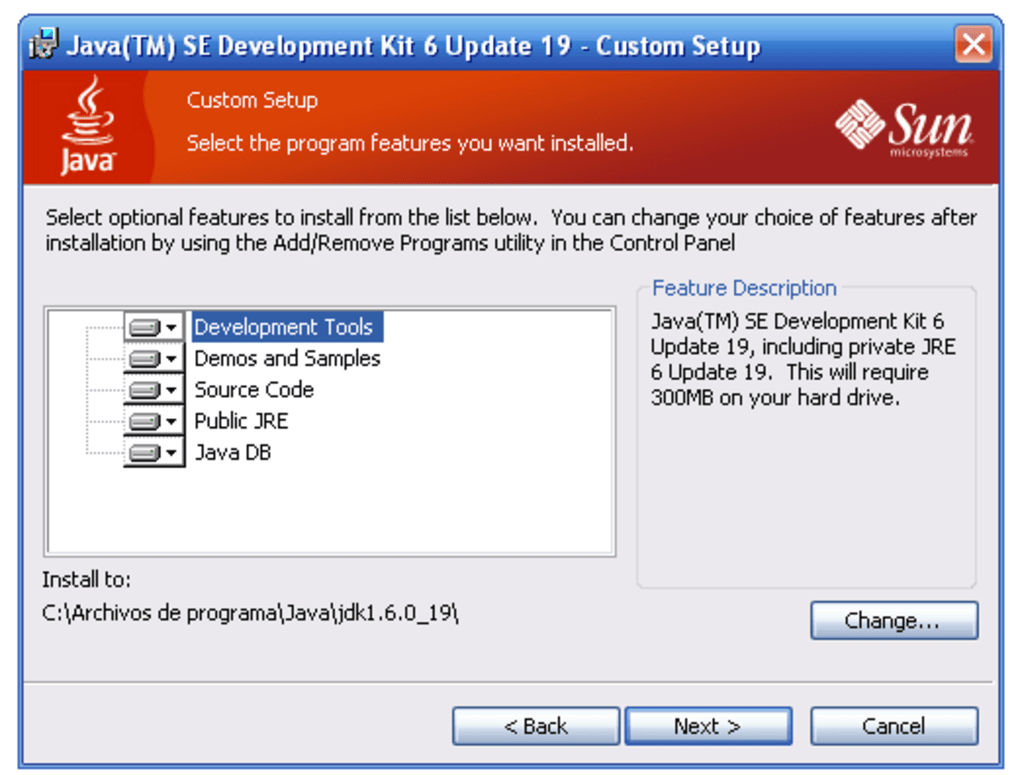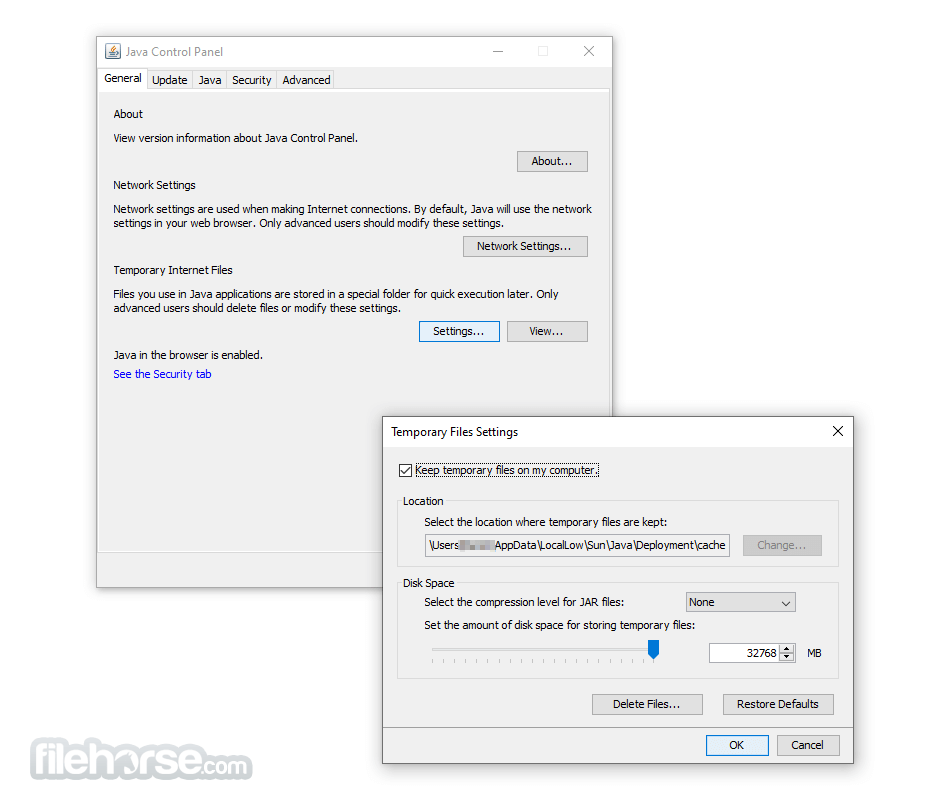Java 8 Update 111 free download - Java Runtime Environment (JRE), DJ Java Decompiler, Java Runtime Environment (JRE) (64-Bit), and many more programs. Java Plug-in technology, included as part of the Java 2 Runtime Environment, Standard Edition (JRE), establishes a connection between popular browsers and the Java platform. Java allows applications to be downloaded over a network and run within a guarded sandbox. If you have not yet installed Apple's Java OS X 2012-006 update, then you are still using a version of Apple Java 6 that includes the plug-in and the Java Preferences app. See 'Note for Users of OS X that Include Apple Java 6 Plug-in'. Only one JRE can be installed. Installing a JRE removes the previously installed JRE.
This topic includes the following sections:
System Requirements for Installing the JDK on macOS
The following are the system requirements for installing the JDK on macOS:
Any Intel-based computer running macOS.
Administrator privileges.
You cannot install Java for a single user. Installing the JDK on macOS is performed on a systemwide basis for all users. Administrator privileges are required to install the JDK on macOS.
Determining the Default JDK Version on macOS
When starting a Java application through the command line, the system uses the default JDK.
You can determine which version of the JDK is the default by entering java -version in a Terminal window. If the installed version is 11 Interim 0, Update 0, and Patch 0, then you see a string that includes the text 11. For example:
To run a different version of Java, either specify the full path, or use the java_home tool. For example:
$ /usr/libexec/java_home -v 11 --exec javac -version
Installing the JDK on macOS
- Download the JDK
.dmgfile,jdk-11.interim.update.patch-macosx-x64.dmg.Before the file can be downloaded, you must accept the license agreement.
Office 2008 for mac free download - Microsoft Office 2008 update, Office for Mac Home and Business 2011, SysTools MAC Office 365 Backup, and many more programs. Free mac office 2008 download. Keep Office 2008 Free Download For Mac everybody up-to-speed at all times. Automatic notifications let users know as soon as anything is changed or updated in previously completed subjects, topics, or steps. Plus, search anything you need to know while on-the-go with the Chrome extension or mobile app. Microsoft Office 2008 Free Download free download - Microsoft Office 2011, Microsoft Office 2010, Microsoft Office Outlook 2007, and many more programs. Office 2008 mac free download - Microsoft Office 2008 update, Office Handy Utility 2008, Office for Mac Home and Business 2011, and many more programs. Download microsoft office 2008 for mac for free. Productivity downloads - Microsoft Office 2008 by Microsoft and many more programs are available for instant and free download.
- From either the browser Downloads window or from the file browser, double-click the
.dmgfile to start it.A Finder window appears that contains an icon of an open box and the name of the.pkgfile. - Double-click the
JDK 11.pkgicon to start the installation application.The installation application displays the Introduction window. - Click Continue.
- Click Install. A window appears that displays the message: Installer is trying to install new software. Enter your password to allow this.
- Enter the Administrator user name and password and click Install Software.The software is installed and a confirmation window is displayed.
Download Java Update 111 Macromedia
.dmg file if you want to save disk space. Uninstalling the JDK on macOS
You must have Administrator privileges.Note:
Do not attempt to uninstall Java by removing the Java tools from /usr/bin. This directory is part of the system software and any changes will be reset by Apple the next time that you perform an update of the OS.
- Go to
/Library/Java/JavaVirtualMachines. - Remove the directory whose name matches the following format by executing the
rmcommand as a root user or by using thesudotool:/Library/Java/JavaVirtualMachines/jdk-interim.update.patch.jdkFor example, to uninstall 11 Interim 0 Update 0 Patch 0:
$ rm -rf jdk-11.jdk
Installation FAQ on macOS Platform
This topic provides answers for the following frequently asked questions about installing JDK on macOS computers.
1. How do I find out which version of Java is the system default?
When you run a Java application from the command line, it uses the default JDK. If you do not develop Java applications, then you do not need to worry about this. See Determining the Default JDK Version on macOS.
2. How do I uninstall Java?
Download Java Update 111 Mac Os

See Uninstalling the JDK on macOS.
3. After installing Java for macOS 2012-006, can I continue to use Apple's Java 6 alongside the macOS JDK for Java 11? Re installing macbook air os with download file from apple.
If you want to continue to develop with Java 6 using command-line, then you can modify the startup script for your favorite command environment. For bash, use this:
$ export JAVA_HOME=`/usr/libexec/java_home -v 11`
Some applications use /usr/bin/java to call Java. After installing Java for macOS 2012-006, /usr/bin/java will find the newest JDK installed, and will use that for all of the Java-related command-line tools in /usr/bin. You may need to modify those applications to find Java 6, or contact the developer for a newer version of the application.
4. Can I restore Apple Java after uninstalling Oracle Java?
Go back to Apple Java using the following instructions:
Uninstall Oracle Java by deleting the plug-in file. From a command-line, enter:
$ sudo rm -rf '/Library/Internet Plug-Ins/JavaAppletPlugin.plugin'Create a symlink using the following command, entered on a single line:
$ sudo ln -s /System/Library/Java/Support/CoreDeploy.bundle/Contents/JavaAppletPlugin.plugin '/Library/Internet Plug-Ins/JavaAppletPlugin.plugin'
5. What happened to the Java Preferences app in Application Utilities?
Java 111 Download
The Java Preferences app was part of the Apple Java installation and is not used by Oracle Java. Therefore, macOS releases from Apple that do not include Apple Java will not include Java Preferences.
This page describes how to install and uninstall JRE 8 on OS X computers.
Note: The JRE installation includes the JavaFX Runtime which is incorporated into the same directory structure. |
This page has these topics:
See 'JDK 8 and JRE 8 Installation Start Here' for general information about installing JDK 8 and JRE 8.
See 'OS X Platform Install FAQ' for general information about installing JRE 8 on OS X.
System Requirements
Observe these requirements:

Any Intel-based computer running OS X 10.8 (Mountain Lion) or later.
Administrator privileges.
Note that installing the JRE on OS X is performed on a system-wide basis, for all users, and administrator privileges are required. You cannot install Java for a single user.
Only one JRE can be installed at a time. The system will not install a JRE that has a lower version than the current version. If you wish to install a lower version of the JRE, uninstall the current version as described in 'Uninstalling the JRE'.
Installing a JRE from Oracle will not update java -version symlinks or add java to your path. To be able to do this, you need to install the JDK.
JRE Downloaded File
Depending on your processor, the downloaded file has one of the following names, where version is the update number:
jre-8uversion-macosx-amd64.dmgjre-8uversion-macosx-x64.dmg
Java Mac Download
Installing JRE 8u40
Free Java Download For Mac
If you are installing JRE 8u40, then follow these steps:
Download the file.
Before the file can be downloaded, you must accept the license agreement.
From either the Downloads window of the browser, or from the file browser, double click the file
.dmgto launch it.A Finder window appears containing an icon of an open box and the name of the
.appfile.Double click the package icon to launch the Install app.
A window appears that says, 'Java 8 Update 40 is trying to install a new helper tool. Type your password to allow this.'
Enter the Administrator login name and password and then click Install Helper.
The Install app then displays the Introduction window.
Click Next.
Oracle has partnered with companies that offer various products. The installer may present you with the option to install these programs when you install Java. Specify if you want these programs installed and then click Next.
Note:
You can disable the presentation of offers during installation by specifying the--args SPONSORS=0option in the terminal command line. For example:open /Volumes/Java 8 Update 40/Java 8 Update 40.app --args SPONSORS=0An Installation Progress window is displayed. Once the software is installed, a confirmation window appears and then an applet is launched to verify the version of Java installed.
Delete the
.dmgfile if you want to save disk space.
Determining the Installed Version of the JRE
If you have not yet installed Apple's Java OS X 2012-006 update, then you are still using a version of Apple Java 6 that includes the plug-in and the Java Preferences app. See 'Note for Users of OS X that Include Apple Java 6 Plug-in'.
Only one JRE can be installed. Installing a JRE removes the previously installed JRE. The JRE version used by the system can be determined in one of two ways:
From System Preferences click the Java icon from the Other category. This launches the Java Control Panel. Click About.
Type the following in a Terminal window (note escaped space character, ignore line break):
The system will not install a JRE that has a lower version than the current version. If you want to install a lower version, first uninstall the existing version.
Uninstalling the JRE
To uninstall the JRE, you must have Administrator privileges and execute the remove commands either as root or by using the sudo(8) tool.
Remove one directory and one file (a symlink), as follows:
Navigate to
/Library/Internet Plug-Insand remove theJavaAppletPlugin.plugindirectory.Navigate to /
Library/PreferencePanesand removeJavaControlPanel.prefpane.
Do not attempt to uninstall Java by removing the Java tools from /usr/bin. This directory is part of the system software and any changes will be reset by Apple the next time you perform an update of the OS.

